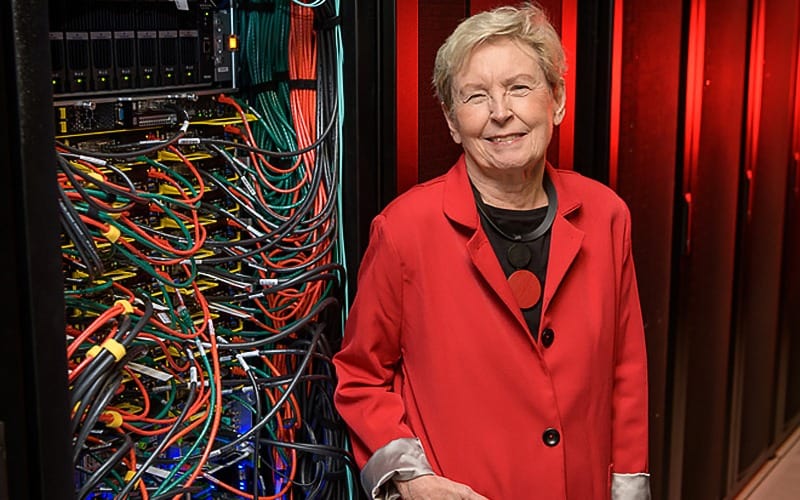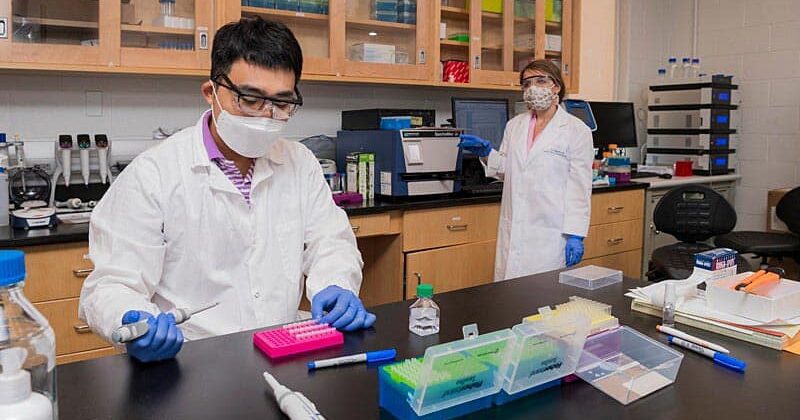 Research & Discovery
Research & Discovery
A Blog Devoted to UD Innovation, Excellence and Scholarship
Research & Discovery
A Blog Devoted to UD Innovation, Excellence and Scholarship
High performance computing
ABOVE: Jane Caviness, director of the University of Delaware’s Academic Computing Services in the 1980s and who later oversaw the implementation of the NSF Network (NSFNET) backbone, photographed with an eponymously named community computing cluster in IT’s Chapel Street computing center. The Caviness Community Cluster is UD’s third High Performance Computing (HPC) cluster and came online in October of 2018 for UD research use. | Photo by Evan Krape and Kathy F. Atkinson
New HPC cluster named for former UD IT director Jane Caviness
The University of Delaware’s newest high performance computing (HPC) community cluster, named Caviness, puts vast computational power at researchers’ disposal.
Named for Jane Caviness, a former UD employee and leader of a ground-breaking expansion of UD’s computing resources and network infrastructure, the Caviness cluster packs twice the computational power of previous community clusters Mills and Farber in just one quarter of the floorspace in a data center.
Caviness, and potentially all of UD’s HPC clusters, will benefit from the forthcoming upgrades to UD’s network, as described in UDaily in December. That means researchers will have access to new high-bandwidth capabilities which will provide increased speeds in downloading and uploading data.
Constructed by UD’s Information Technology (UDIT) department, Caviness’s powerful design offers a more robust computing environment to UD researchers.
We are excited by the rapid subscription to the Caviness cluster by research faculty and will be seeking to collaborate with research faculty to design HPC capabilities that broadly support their increasingly diverse computational needs,” said Sharon Pitt, UD vice president and CIO of Information Technologies.
Researchers who invest in a HPC cluster can leverage the cluster to rapidly solve difficult computational problems, using a combination of processing and storage. For example, Josh Neunuebel, assistant professor of psychological and brain sciences, uses the Farber HPC cluster to analyze terabytes of audio and video data of mice to illuminate the impact communication has on the development of mouse social behavior.





